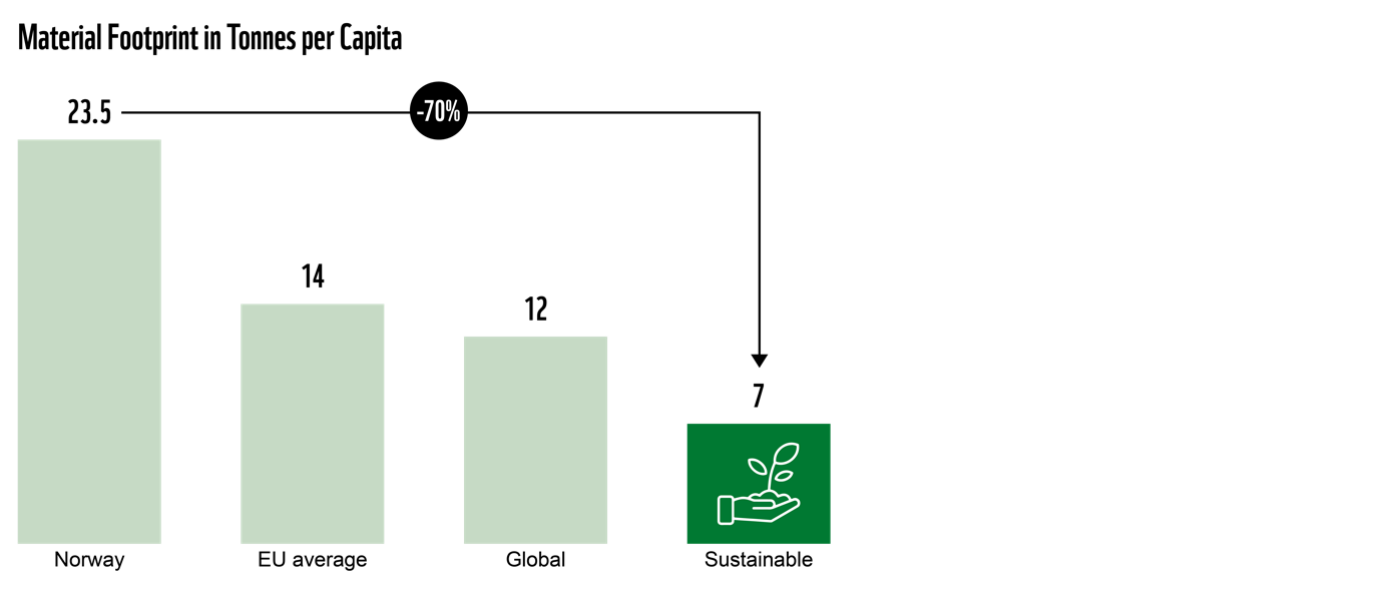EY refers to the global organization, and may refer to one or more, of the member firms of Ernst & Young Global Limited, each of which is a separate legal entity. Ernst & Young Global Limited, a UK company limited by guarantee, does not provide services to clients.
How to reduce Norway’s material footprint
Nature has limits
Download the full report to learn more


In collaboration with WWF, we have developed a comprehensive report that focuses on understanding Norway’s material footprint and how it is distributed across our economy. This report is one of the first to study Norway’s material footprint on an economic sector level, giving a unique insight into the Norwegian material footprint and the sectors' pressure on the planetary boundaries.
Planetary boundaries are limits that scientists have identified to help protect the Earth’s environment. These boundaries include factors like climate change, ocean health, the ozone layer, pollution, and biodiversity. Crossing these limits can cause serious and potentially irreversible damage to our planet, affecting ecosystems and human life. They act as warning signs to help us prevent large-scale environmental problems.

Figure: The global rose chart shows the nine planetary boundaries with today’s level of activity and respective threshold.
Credit: "Azote for Stockholm Resilience Centre, based on analysis in Richardson et al 2023".
Overconsumption is pushing the boundaries too hard
Norway has among the highest levels of raw material consumption per capita in the world, well above European and global averages. There is a strong correlation between a high material footprint and severe negative environmental impacts upon the planetary boundaries. The material footprint must be reduced by a staggering 70% to stay within sustainable levels of consumption. Norway can substantially reduce its footprint through collective action on the part of politicians, businesses and consumers supported by a comprehensive package of circular measures and policy instruments.

Figure: Bar chart shows Norway's material footprint per capita compared to EU average, global average and sustainable material footprint levels, Raw Material Consumption (RMC).
Sectors and circularity
The greatest circular potential lies in the Construction, Transportation, Manufacturing, and Agriculture, Forestry, and Fishing sectors. Within these sectors, some of the most impactful measures include optimizing use of space in offices and housing, reducing the use and number of personal vehicles, circular product design, and switching to a more plant-based diet. Enacting transformative circular policies and measures that avoid resource use is essential for harnessing this potential. This requires a cultural paradigm shift in living, travelling, and consumption habits, redefining prosperity away from material accumulation and towards valuing intangible assets such as time, community, and well-being.


Key highlights of the report
- Understanding Material Footprint: The report outlines the material footprint of Norway by addressing the quantity of materials used by the Norwegian economy, divided into four main categories – metals, non-metallic minerals, fossil fuels, and biomass.
- Environmental Impact: It looks at material-related impacts on the environment and seeks to map out the potential to reduce and minimize identified impacts.
- Sector-Specific Analysis: The report presents a wide range of circular economy measures for each sector, focusing both on policy measures and business strategies.
- Deep Dive into Key Sectors: It provides a deep dive into the Construction and Transportation sectors, showing the potential of implementing a few high-impact circular economy measures.



